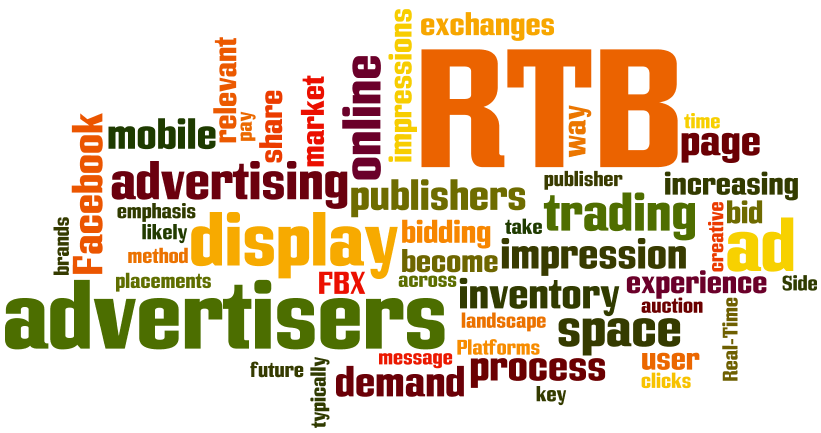Programmatic RTB has become one of the leading technologies for ad serving for the last few years. To say it simply, RTB ad network reminds an auction, however, we are going to look at this process of ad serving in details for you to understand it better.
As you could guess, Real-Time Bidding operates with the data here and now. In short, when a user comes to a website joined to a programmatic ecosystem something like the following happens: cookies read user’s characteristics (location, approximate age, interests, type of the device and browser), after which advertisers are bidding how much they are ready to invest in this particular impression, a winner with the biggest bid shows his ad. The process takes time while the page is loaded, everything is finished when the ad was displayed. It all begins again with a new visitor.
Key benefits of RTB advertising
First of all, the issue of transparency becomes one of the most important. Traditional ad networks are not so good at it, as fraud problem is quite common for them. While here each display can be checked and examined.
Besides, an important financial point arises. Local companies even with small budgets can participate in promoting their goods and services, the same as websites where the audience is something like 1 000 visitors or a bit less.
What does RTB Advertising Comprise of?
There are several participants performing their strict roles to organize clear and high-speed process.
- SSP (Sell Side Platform) – a platform of automatic traffic sales for websites owners (publishers) with auction estimation of its cost. SSP acts for playgrounds and responsible for sales at the biggest price and auction winner defining.
- DSP (Demand Side Platform) – it is a place where advertisers (private individuals, agencies, companies) obtain displays from various advertising exchanges. Here advertiser’s interest is taken care, like buying impression at the lowest coast, obtaining real-time statistics about displays.
- Trading Desk – it can be compared with a dashboard. It is a place where RTB starts for an advertiser: he sets necessary parameters about desirable audience and budget limits.
- Online advertising network – it works like a third-party between publishers and advertisers. It unites platforms according to owners’ requirements and offers the best variants to meet advertisers’ demands.
- Ad Server – it is a technically complicated block that delivers special software for both parties involved in the process so that they can to run ad allocation and its optimization. It represents banners database and its features for ad networks.
- DMP (Data Management Platform) – this service was created to handle for audience targeting: analysis, segmentation, users’ anonymous profiles organization and using the information obtained for showing the ad required at this particular moment.
- Data Broker (Data Suppliers) – this service collects and sales to DMP platforms anonymous users profiles, including their consuming behavior, interests and other factors that help targeting to be more precise. The system uses cookies data, pixel tag, mobile and social media platforms identifiers, etc.
- Ad Exchange – it is necessary to establish a connection between advertisers and websites, traffic bidding is organized there.
- Ad Verification & Brand Safety – this block was created to deal with security issues, we need it for post-checking the ads, protect brands from banners that were created and posted in wrong manner, cleanliness of traffic, undesirable surrounding and so on.
Why RTB Advertising is Popular?
Programmatic is quite popular and it is often referred to as RTB. However, it is not the only variant of performance.
Displays can be obtained for a period of time or as an amount. In this case Advertiser and Publisher communicate directly about pricing and other terms. Programmatic is used there as an ecosystem for effecting a transaction.
Read Also:





















